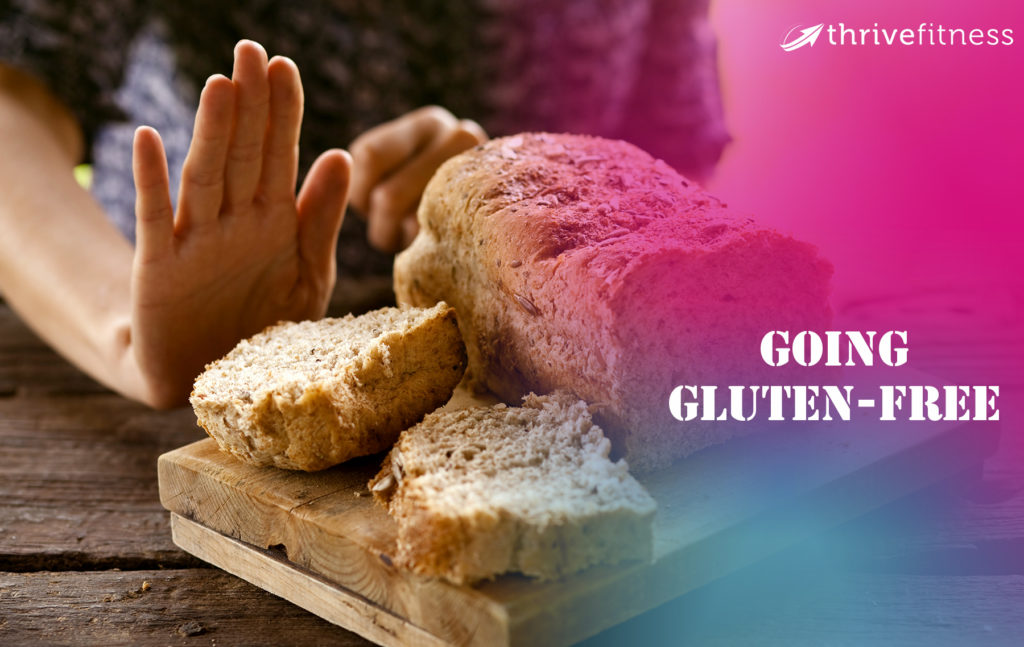No products in the cart.
Uncategorised
Be Smart about Gluten-Free Foods
I’m meeting more and more people who are requiring gluten-free nutritional plans. Are you going gluten-free? If so, you are in good company. Many Australians are reducing the gluten in their diets. Some are doing this because they have a confirmed diagnosis of Celiac disease, some are gluten sensitive, and others are finding that reducing gluten aids them in weight loss.
What is gluten?
Gluten is a protein found in certain grains such as wheat, barley, rye, spelt and semolina. It not only gives baked goods their characteristic texture and chewiness, but it is also used in the processing of many other foods to add thickness, flavour and added protein.
If someone has Celiac disease, they have a condition in which the body experiences an immune reaction when gluten is eaten. The result is damage to the inside of the small intestine, which impairs absorption of nutrients. Gluten sensitivity is different in that the reaction to gluten is less severe and less damaging to the small intestine, but physical symptoms are still present, such as nutritional deficiencies, gastro intestinal difficulties and headaches. In spite of their differences, both conditions are treated by removing gluten from the diet.
It is not just those who have a diagnosed sensitivity to gluten who are removing it from their diets, though. Many healthy people are reducing gluten, usually because they are interested in reducing carbohydrates in their diets. Most breads, pastas and baked goods contain carbohydrates, because they contain wheat. If you are interested in lowering your carb intake, going-gluten free is one way to do that because traditionally, many baked goods are made with wheat, which is high in gluten. When you remove wheat from your diet, you have fewer choices when it comes to carbs.
But “fewer choices” does not mean “no choices.” With the explosion of interest in gluten-free products, food manufacturers have stepped-up the production of baked goods that look, taste and feel like traditional, gluten-containing foods, but are in fact, gluten-free. From breads to cinnamon rolls to pastas, there is a gluten-free food to satisfy nearly any craving you might have.
This is good news for those who need alternatives, but it is also bad news, because it is easy to mistake gluten-free for carb-free. The two are not the same. Carbs are found in many other grains and foods, and are often present in significant amounts in gluten-free products. It is tempting to think that because a cracker or brownie is gluten free that you can eat as many as you want. You can’t. Those crackers and brownies are likely to be very high in carbs and calories, as well as other unhealthy ingredients, such as sugar. When you eat these foods, you are simply trading one carb source for another. If weight loss through carb restriction is your goal, this will slow down your progress.
Your best defense is to be informed. Know what you are eating. Before you eat a gluten-free product, read the label. Check the ingredients, the carb and sugar count and the number of calories it contains. And stay on the lookout for foods that are both low in carbs and low in gluten. And of course, practice moderation. Too much of anything is seldom healthy.
Personal Nutrition Plan?
Don’t hesitate to call or email me if you require my guidance. I will devise a personal nutrition plan around your working day. Resulting in you becoming a more fat-efficient burning ‘machine.’ Tel: 0437 314 920 or [email protected]
I wish you all the best in achieving your personal goals.
SteveCoach to your Health & Success


